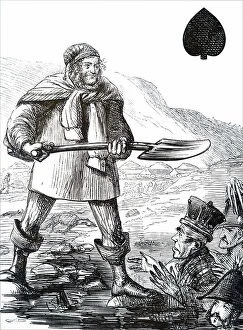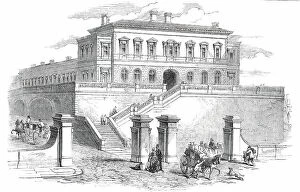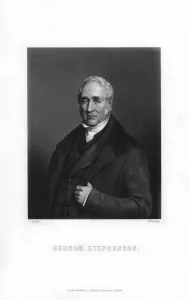Liverpool Manchester Railway Collection
"Revolutionizing Transportation: The Liverpool-Manchester Railway" Step back in time to the early 19th century when a groundbreaking mode of transportation was born
All Professionally Made to Order for Quick Shipping
"Revolutionizing Transportation: The Liverpool-Manchester Railway" Step back in time to the early 19th century when a groundbreaking mode of transportation was born. The Liverpool and Manchester Railway, established in England in 1831, marked the birth of modern railways as we know them today. Travelling on this railway was an experience like no other. Early railway coaches provided a glimpse into the past, transporting passengers through picturesque landscapes with awe-inspiring speed and efficiency. It was a journey that would forever change the way people moved across vast distances. At the heart of this technological marvel stood George Stephenson's masterpiece - "The Rocket. " This steam locomotive, designed and built by Stephenson himself, became synonymous with progress and innovation. Its power and reliability captivated all who witnessed it thundering along the tracks. One can only imagine the excitement felt by those fortunate enough to witness history being made as they entered the tunnel at Edge Hill in Liverpool. Artist John Davies beautifully captured this momentous occasion, immortalizing it for generations to come. George Stephenson himself remains an icon of engineering brilliance even today. His genius is evident in every detail of his creation - "The Rocket. " From its initial unveiling in 1829 to its continued impact well into the 20th century, this locomotive truly stands as a testament to his ingenuity. Lime Street Station in Liverpool served as both a gateway and symbol of progress during these transformative times. Its grand facade welcomed travelers from near and far, offering them access to new horizons previously unimaginable. As we reflect on these historical milestones, let us not forget their significance. Medals commemorating George Stephenson's centenary remind us that without visionaries like him pushing boundaries, our world would be vastly different today. The Liverpool-Manchester Railway revolutionized transportation forevermore; it connected cities, united communities, and paved the way for future advancements worldwide.




















